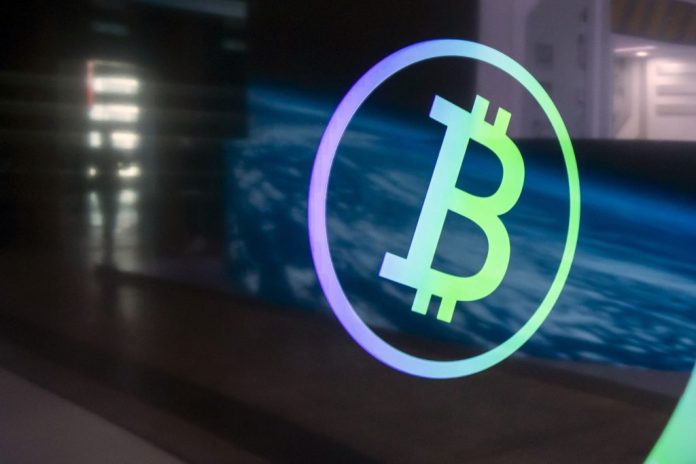If one of the major trends of 2021 was the rise of non-fungible tokens or NFTs, then that trend is about to explode in 2022.
NFT sales came from virtually nowhere to clock close to $15 billion in turnover across all platforms.
NFTs are just getting started
NFTs have created an entirely new economy for digital property.
NFTs provide more than ownership of a digital image.
Initially regarded by many as a passing fad for creating a marketplace for digital art that anyone could download for free, NFTs have launched an entire new economy – what Harvard Business Review calls “digital deeds”.
NFTs are “one-of-a-kind” assets in the digital world that can be bought and sold like any other piece of property. The digital tokens can be thought of as certificates of ownership for virtual assets (such as in-app items and digital art) or physical assets (such as real-life paintings and even houses under tokenisation).
Harvard Business Review says owning an NFT “effectively makes you an investor, a member of a club, a brand shareholder, and a participant in a loyalty programme all at once”.
“At the same time,” it adds, “NFTs’ programmability supports new business and profit models – for example, NFTs have enabled a new type of royalty contract, whereby each time a work is resold, a share of the transaction goes back to the original creator.”
Revix investment analyst Brett Hope Robertson says NFTs and the ecosystem around them are a key trend to watch in 2022. “The NFT space is developing into areas that help many, from individual artists to companies and everything in between. It’s about the transference of an asset or [the] right to an asset to anyone. This transference happens without the need for excess fees or third-party influence. It’s an exciting development that has created a marketplace for digital properties, and we can see from the NFT volumes being traded that this is not a passing fad.”
NFT platforms like OpenSea, games like Axie Infinity and artworks like CryptoPunks now have a dedicated corps of traders, creators and service providers. And on that point, the number of unique NFT wallets grew more than 1 000% in 2021, a trend that is likely to continue into the new year.
Source: Messari
The tokenisation of (nearly) everything
The Frankfurt School Blockchain Centre (FSBC) says the market size of tokenised assets in Europe will grow to $1.5 trillion within the next three years.
Tokenisation is the process of creating digital tokens that represent ownership and other rights to virtually any kind of asset, be it virtual, equities, real estate, debt, bonds, copyrights, art or collectables.
Blockchain technology has made it possible to acquire fractional ownership of a property, with legal rights, without having to stump up the full cost of the property. The same is now happening in other forms of securities such as debt, bonds and equities.
“This is what NFTs, tokenisation and blockchain technologies are capable of – it’s a game-changer,” says Hope Robertson.
“One of the great promises of cryptos is that they would bring financial inclusion to the masses, and this is certainly a major step in that direction. For many people, investing in alternative investments or traditional assets is either only for the exclusive or it’s just too expensive. Blockchain technologies are going to create ways to invest in all sorts of assets and allow crowdfunding techniques to give access to even the smallest investors.
“Tokenisation will make investing truly astonishing, simple and affordable. [Investors] can already buy a tiny fraction of a property backed by real assets, with the opportunity to earn rental income and see capital appreciation, and then sell their tokens when they want to exit the investment.”
Continued institutional adoption of Bitcoin and, increasingly, Ethereum
The Global Crypto Adoption Index released by Chainalysis in August shows an 880% 12-month surge in crypto adoption worldwide as citizens seek shelter from currency debasement. Countries with the most aggressive crypto adoption rates are also those subject to actual or threatened currency debasement: Vietnam, India, Pakistan, Ukraine, Kenya, Nigeria and Venezuela.
As previously reported on Moneyweb, in August Bitcoin’s most famous corporate backer, Michael Saylor of MicroStrategy, announced that his company had purchased another 21 454 BTC, bringing to 114 042 (worth $5.6 billion) its total BTC holding. This jaw-dropping bet on Bitcoin has caught the attention of many other corporate leaders, who have started paying attention to Saylor’s message that fiat currencies are embarked on a road to perdition due to reckless monetary expansion.
iCapital Network reports that fintechs, banks and asset managers are racing to offer blockchain payments, trading and investment offering to consumers, while an ever-expanding list of companies now accept cryptocurrencies, including Microsoft, Starbucks, AXA Insurance, Amazon, Visa, PayPal, MassMutual, Coca-Cola and Shopify.
“Everywhere you look, more and more companies are starting to engage with cryptos and blockchain technologies,” says Hope Robertson. “It’s reasonable to assume that companies that start accepting payment in cryptos may also start looking at shifting some of their cash reserves into Bitcoin and other crypto assets as an alternative to fiat currencies. El Salvador was the first country to accept Bitcoin as legal tender and is now also issuing a Bitcoin Bond. With this bond issuance, I feel the framework is there for other countries looking for a way out of dollar-denominated debt to follow suit in 2022.”
Will Bitcoin challenge Apple as the world’s most valuable asset?
There is an inevitability about Bitcoin’s challenge to the world’s largest quoted stocks, such as Apple (market cap of $2.7 trillion), Microsoft ($2.5 trillion) and Google holding company Alphabet ($1.9 trillion). Measured against the world’s largest companies, Bitcoin ranks seventh in terms of market cap after Tesla ($1 trillion).
It’s taken just over a decade to get here, and an increase of 200% will push it well ahead of Apple’s current valuation.
That may seem like a long shot, but Bitcoin has grown by a compound average of about 200% for the last decade. It may not achieve that Olympian target going forward, but many Bitcoin maximalists believe it will eventually surpass gold (market value around $11 trillion) and will dwarf the likes of Apple and Microsoft.
Not to be ignored is the rise of Ethereum as the world’s second largest cryptocurrency (market cap $519 billion) and the continued rise of altcoins (all cryptos except Bitcoin) – which now account for 58% of total crypto market cap.
“I think it’s safe to assume that altcoins will continue to capture a larger share of the total crypto market cap, though we could see Bitcoin – which has been losing its dominance – stage a resurgence,” says Hope Robertson. “There are now more than 10 000 cryptos, and many of these will undoubtedly fail, but some will survive and go on to reshape industries. We’re still in the Wild West when it comes to cryptos, so we can expect plenty of volatility going forward.”
The rise of Web 3.0
Another trend to watch in 2022 is the rise of Web 3.0 (also called Web3).
Web 2.0 was driven by disruptive technologies such as mobile internet access and social networks, while Web 3.0 takes us into a new frontier – a movement of different technologies that are designed to give users control of their data and make the internet more decentralised, verifiable and secure.
Internet inventor Tim Berners-Lee envisaged this latest evolution where no permission is needed from any central authority to post anything on the web, there is no central controlling node and no single point of failure, nor does anyone have a ‘kill switch’ on the internet. “This also implies freedom from indiscriminate censorship and surveillance,” write Berners-Lee.
Hope Robertson says the rise of Web3 has taken time to fully manifest due to a need for infrastructure across computation, data management, hosting, storage, and other vital services. Cryptocurrencies that support the Web3 environment are Helium, Arweave, Render, Ocean and Filecoin.
“Expect to see huge advances in Web 3.0 technologies, and cryptocurrencies that support these technologies. This is going to be a huge growth area to watch in 2022,” says Hope Robertson.
Stand a chance to win one of three exclusive pairs of Tateossian® Blockchain Cufflinks.
Simply predict what you think the Bitcoin price will be on the 3rd of January and make an investment of R500 or more in Bitcoin via Revix’s platform.
Click here to take part!
About Revix
Revix brings simplicity, trust and great customer service to investing. Their easy to use online platform enables anyone to securely own the world’s top investments in just a few clicks.
Revix guides new clients through the sign-up process to their first deposit and first investment. Once set up, most customers manage their own portfolio but can access support from the Revix team at any time.
For more information, please visit www.revix.com
This article is intended for informational purposes only. The views expressed are not and should not be construed as investment advice or recommendations. This article is not an offer, nor the solicitation of an offer, to buy or sell any of the assets or securities mentioned herein. You should not invest more than you can afford to lose, and before investing, please take into consideration your level of experience, investment objectives and seek independent financial advice if necessary.
Brought to you by Revix.
Moneyweb does not endorse any product or service being advertised in sponsored articles on our platform.
Credit: Source link





















 Bitcoin
Bitcoin  Ethereum
Ethereum  Tether
Tether  Solana
Solana  USDC
USDC  Lido Staked Ether
Lido Staked Ether  XRP
XRP  Dogecoin
Dogecoin  Toncoin
Toncoin  Cardano
Cardano  Shiba Inu
Shiba Inu  Avalanche
Avalanche  TRON
TRON  Wrapped Bitcoin
Wrapped Bitcoin  Polkadot
Polkadot  Bitcoin Cash
Bitcoin Cash  Chainlink
Chainlink  NEAR Protocol
NEAR Protocol  Polygon
Polygon  Litecoin
Litecoin  Internet Computer
Internet Computer  Fetch.ai
Fetch.ai  Uniswap
Uniswap  Dai
Dai  LEO Token
LEO Token  Ethereum Classic
Ethereum Classic  Hedera
Hedera  Aptos
Aptos  First Digital USD
First Digital USD  Render
Render  Cosmos Hub
Cosmos Hub  Cronos
Cronos  Pepe
Pepe  Mantle
Mantle  Filecoin
Filecoin  Stacks
Stacks  Immutable
Immutable  dogwifhat
dogwifhat  Stellar
Stellar  Wrapped eETH
Wrapped eETH  XT.com
XT.com  Renzo Restaked ETH
Renzo Restaked ETH  Bittensor
Bittensor  OKB
OKB  Optimism
Optimism  Arbitrum
Arbitrum  The Graph
The Graph  Maker
Maker 
